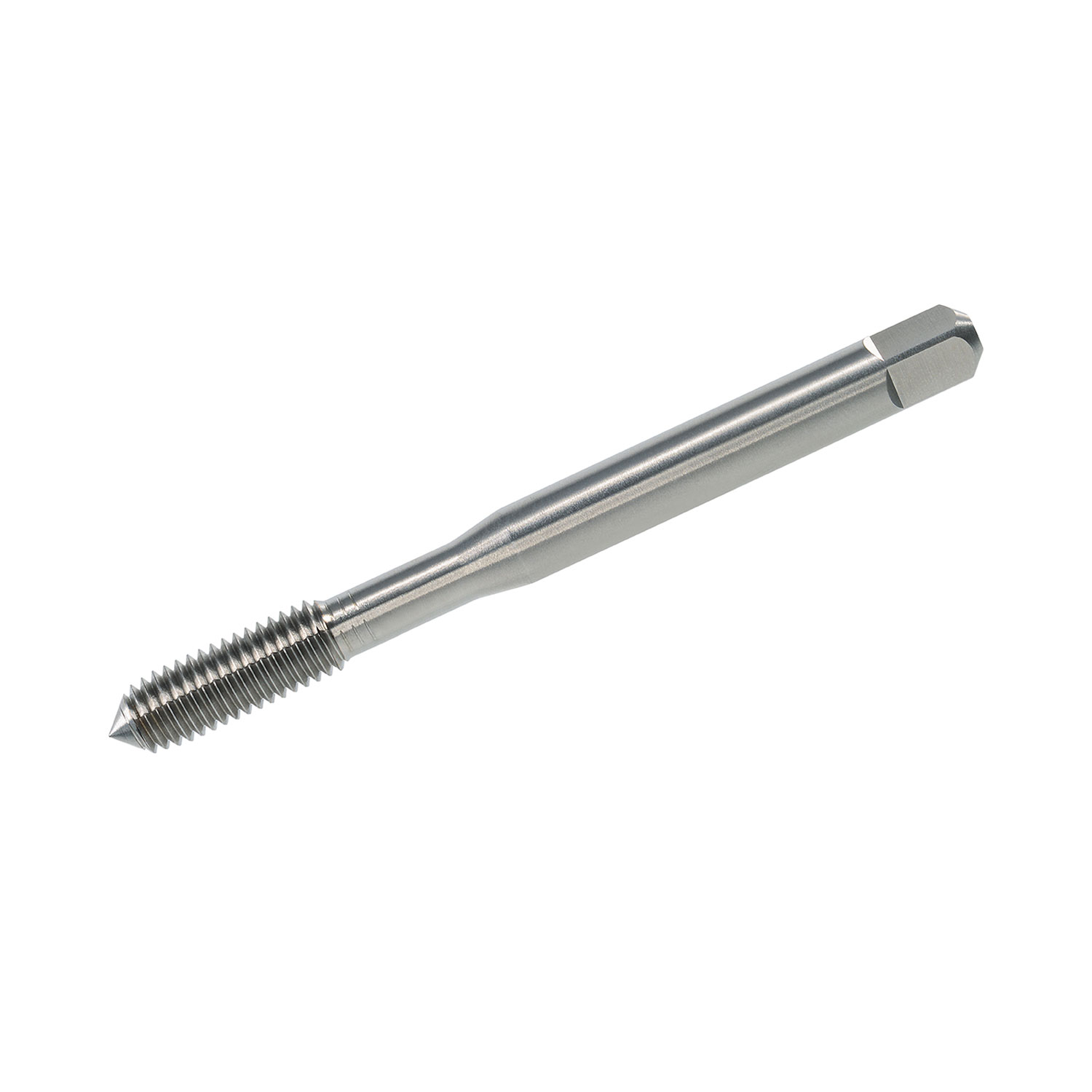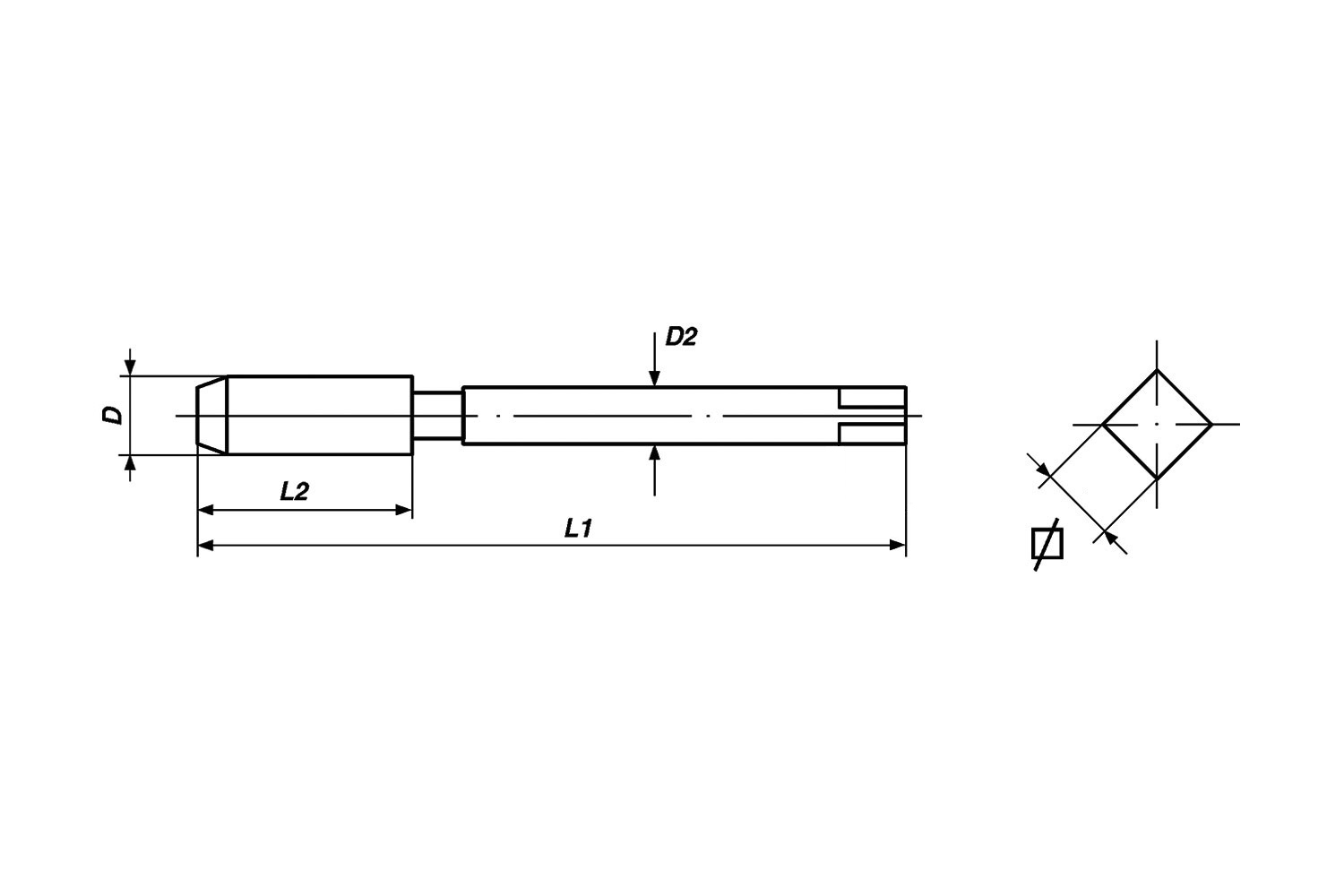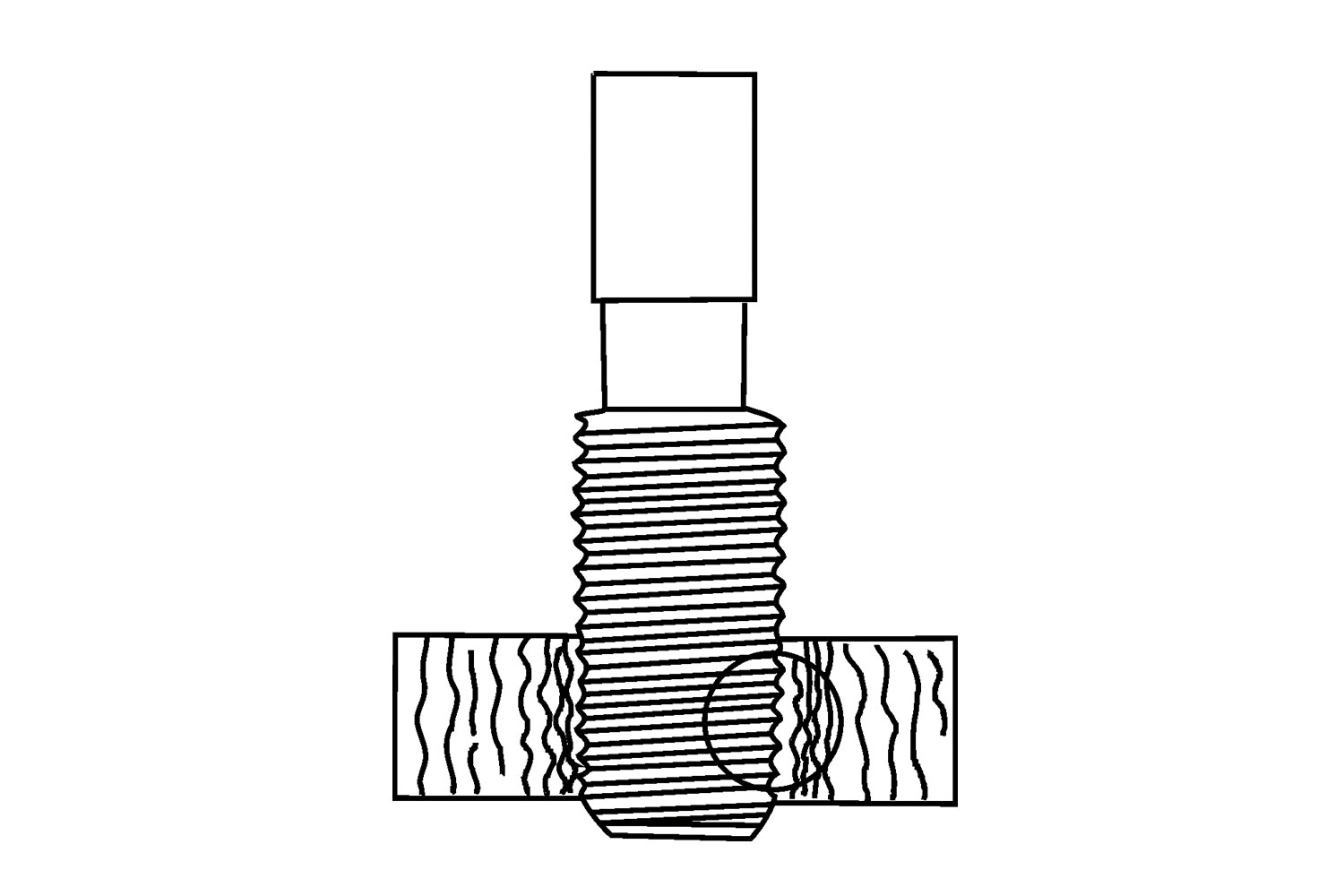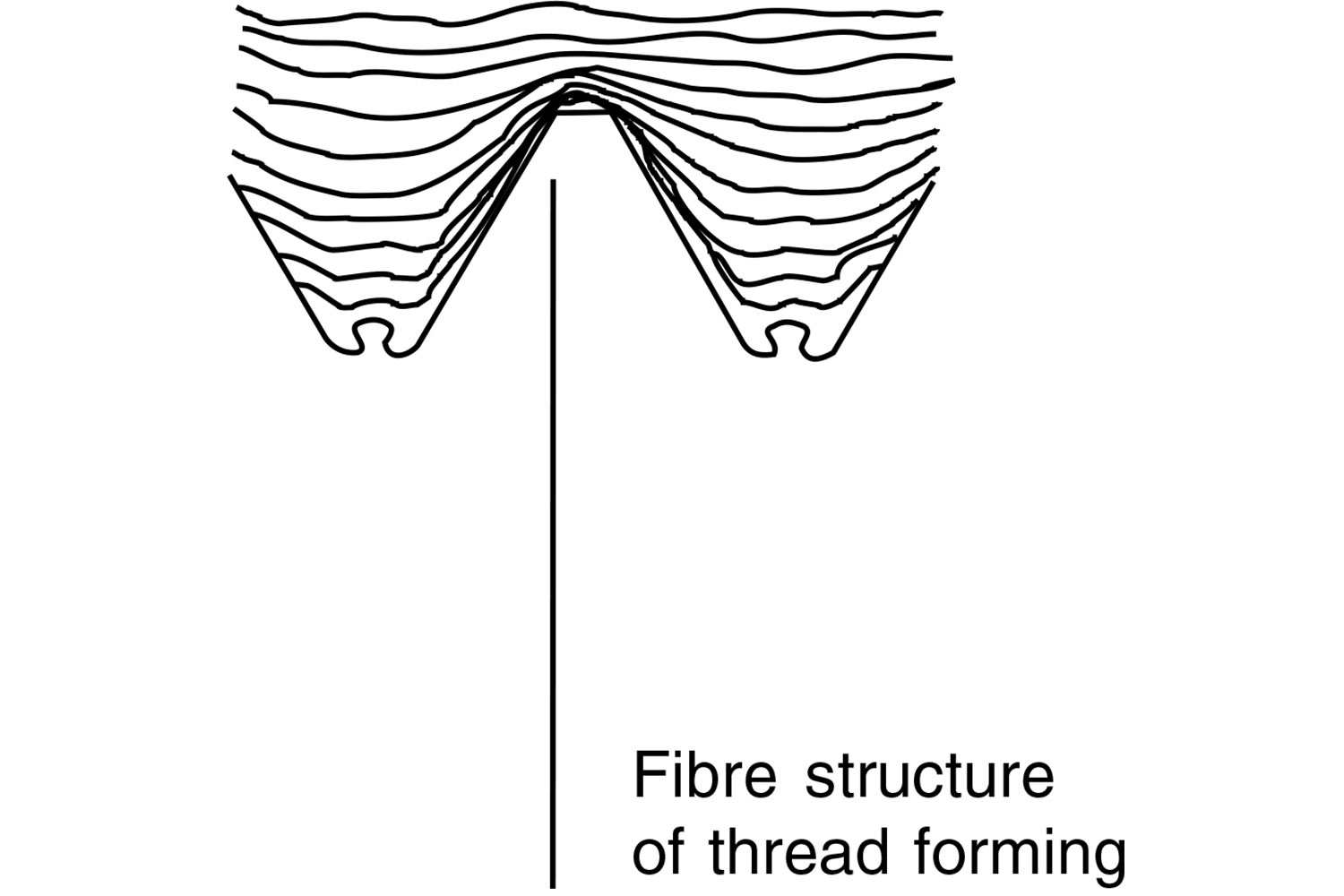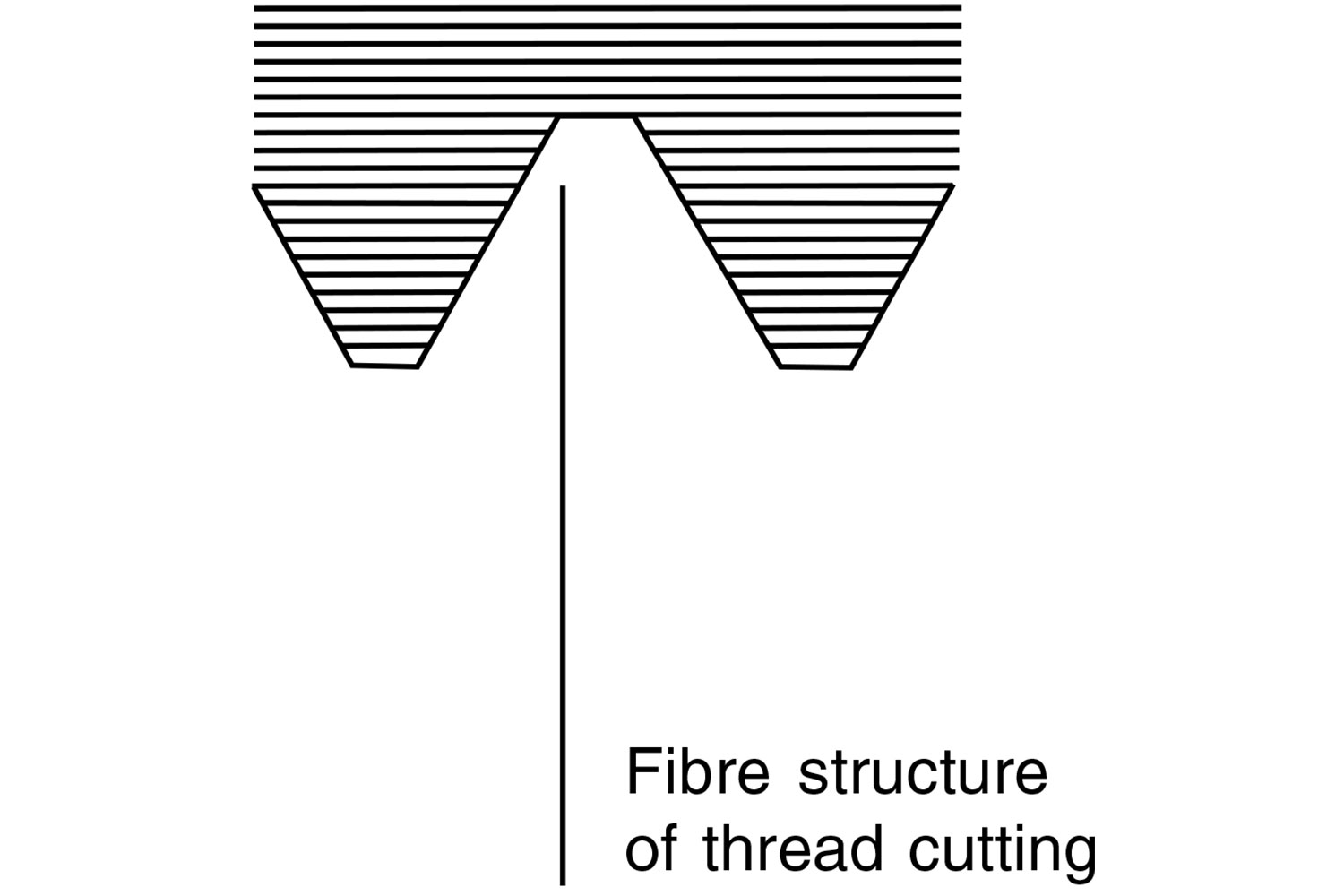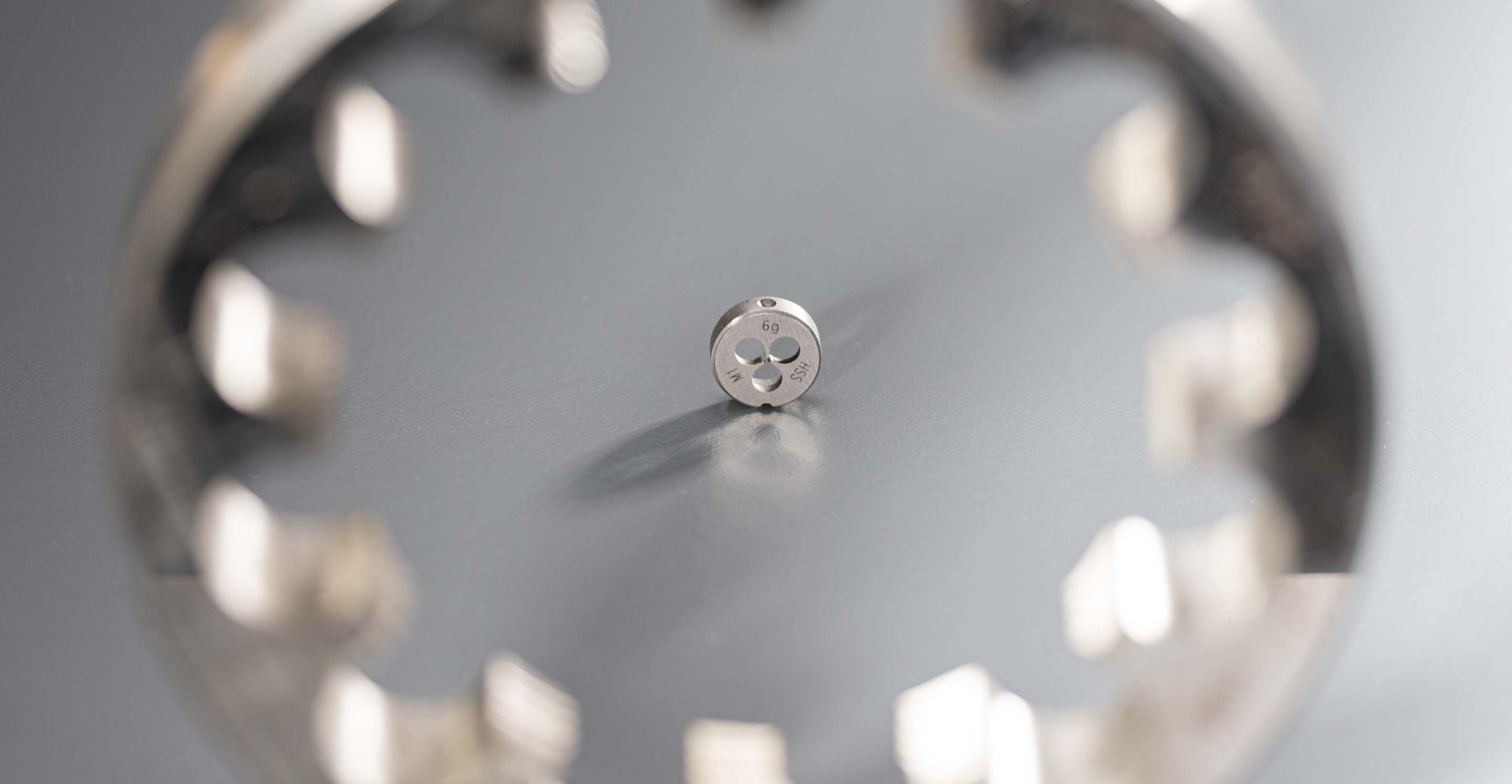Fluteless Machine Tap without oil groove DIN 376 Form C HSSE ISO3X (6GX) - M 12 x 1.75
€24.40
VÖLKEL delivers exclusively to specialized dealers. Online you can buy VÖLKEL products here.
The prices are in Euro plus VAT and shipping, insurance and packaging costs.
VÖLKEL Fluteless Machine Tap without Oil Groove DIN 376 Form C HSSE ISO3X (6GX) – M 12 × 1.75
This HSSE fluteless machine tap is engineered for the chipless production of internal threads. Instead of generating chips, it displaces and work-hardens the material to produce smooth, precise and durable threads. The Form C design without oil groove increases tool rigidity and fracture resistance, enabling higher permissible cutting speeds and consistent profile accuracy in aluminium, copper, brass, bronze and zinc alloys, including parts with galvanic protection layers.
The ISO3X (6GX) former tolerance applies a slight oversize (approx. 0.02–0.04 mm) to compensate for elastic springback during forming, ensuring that the finished thread reliably meets the target tolerance. The result is long tool life, high thread strength and zero chip-handling issues.
Advantages
- Longer tool life than cutting taps
- Higher permissible cutting speed
- Consistent dimensional and profile accuracy
- High stability and load capacity of formed threads
- Excellent fracture resistance
- No chip removal, no risk of swarf jamming
Application
- Chipless forming of internal threads
- For non-ferrous metals of good ductility
- For materials with galvanic protection layers
- Tolerance ISO 3 (6G): oversize 0.02–0.04 mm
- For long-chipping non-ferrous materials (copper, brass, bronze, aluminium)
- Suitable for zinc alloys
- For through and blind holes
Step-by-Step Guide
- Drill the core hole: Use the forming core diameter for M 12 × 1.75. Deburr and clean.
- Mount the tool: Clamp the tap coaxially (7 mm square). Secure the workpiece and check run-out.
- Apply lubricant: Use suitable forming oil/coolant to reduce friction and improve surface finish.
- Form the thread: Moderate speed with constant feed. No chips are generated; material flows into the thread shape.
- Finish & inspection: Retract, clean, lightly deburr and verify with GO/NO-GO gauges.
Technical Data
| Thread type | Metric ISO thread DIN 13 |
| Standard | DIN 376 |
| Form | Form C (lead-in length, without oil groove) |
| Material | HSSE |
| Tolerance (former) | ISO 3X / 6GX (oversize ~0.02–0.04 mm) |
| Nominal size | M 12 × 1.75 |
| Overall length (L1) | 110 mm |
| Thread length (L2) | 29 mm |
| Shank Ø (D2) | 9 mm |
| Drive square | 7 mm |
| Article No. | 35517-6G |
FAQ
Do I need special chip evacuation?
No. Thread forming is chipless, eliminating swarf jamming—especially beneficial in blind holes.
Which cutting data should I start with?
Due to the stronger core (no oil groove) higher speeds are typically possible than with cutting taps. Select values based on material, lubrication and machine capability.
What benefits come from work-hardening the flanks?
Cold forming increases flank strength and wear resistance, improving the service life of the threaded joint.
Manual use?
Possible, but machine use is recommended for repeatable quality and process reliability.
How do I choose the forming core diameter?
Use a forming chart for M 12 × 1.75. The core diameter for forming is larger than for cutting because material is displaced, not removed.
Need help with selection, cutting data or lubricants? Get in touch via our contact form.
| Type of thread | metric ISO-thread |
|---|---|
| Standard | DIN 376 |
| Form | Form C |
| Material | HSSE |
| Tolerance | ISO3X (6GX) |
| Size | M 12 x 1.75 |
| Overall length (L1) | 110 mm |
| Thread length (L2) | 29 mm |
| Core hole diameter (D1) | 11.2 mm |
| Shank diameter (D2) | 9.0 mm |
| Drive connector | 7.0 mm |
| Item number | 35517-6G |
| Application | for through and blind holes |
| Thread standard | DIN 13 |
VÖLKEL Fluteless Machine Tap without Oil Groove DIN 376 Form C HSSE ISO3X (6GX) – M 12 × 1.75
This HSSE fluteless machine tap is engineered for the chipless production of internal threads. Instead of generating chips, it displaces and work-hardens the material to produce smooth, precise and durable threads. The Form C design without oil groove increases tool rigidity and fracture resistance, enabling higher permissible cutting speeds and consistent profile accuracy in aluminium, copper, brass, bronze and zinc alloys, including parts with galvanic protection layers.
The ISO3X (6GX) former tolerance applies a slight oversize (approx. 0.02–0.04 mm) to compensate for elastic springback during forming, ensuring that the finished thread reliably meets the target tolerance. The result is long tool life, high thread strength and zero chip-handling issues.
Advantages
- Longer tool life than cutting taps
- Higher permissible cutting speed
- Consistent dimensional and profile accuracy
- High stability and load capacity of formed threads
- Excellent fracture resistance
- No chip removal, no risk of swarf jamming
Application
- Chipless forming of internal threads
- For non-ferrous metals of good ductility
- For materials with galvanic protection layers
- Tolerance ISO 3 (6G): oversize 0.02–0.04 mm
- For long-chipping non-ferrous materials (copper, brass, bronze, aluminium)
- Suitable for zinc alloys
- For through and blind holes
Step-by-Step Guide
- Drill the core hole: Use the forming core diameter for M 12 × 1.75. Deburr and clean.
- Mount the tool: Clamp the tap coaxially (7 mm square). Secure the workpiece and check run-out.
- Apply lubricant: Use suitable forming oil/coolant to reduce friction and improve surface finish.
- Form the thread: Moderate speed with constant feed. No chips are generated; material flows into the thread shape.
- Finish & inspection: Retract, clean, lightly deburr and verify with GO/NO-GO gauges.
Technical Data
| Thread type | Metric ISO thread DIN 13 |
| Standard | DIN 376 |
| Form | Form C (lead-in length, without oil groove) |
| Material | HSSE |
| Tolerance (former) | ISO 3X / 6GX (oversize ~0.02–0.04 mm) |
| Nominal size | M 12 × 1.75 |
| Overall length (L1) | 110 mm |
| Thread length (L2) | 29 mm |
| Shank Ø (D2) | 9 mm |
| Drive square | 7 mm |
| Article No. | 35517-6G |
FAQ
Do I need special chip evacuation?
No. Thread forming is chipless, eliminating swarf jamming—especially beneficial in blind holes.
Which cutting data should I start with?
Due to the stronger core (no oil groove) higher speeds are typically possible than with cutting taps. Select values based on material, lubrication and machine capability.
What benefits come from work-hardening the flanks?
Cold forming increases flank strength and wear resistance, improving the service life of the threaded joint.
Manual use?
Possible, but machine use is recommended for repeatable quality and process reliability.
How do I choose the forming core diameter?
Use a forming chart for M 12 × 1.75. The core diameter for forming is larger than for cutting because material is displaced, not removed.
Need help with selection, cutting data or lubricants? Get in touch via our contact form.
Recommended products
35517-6G

